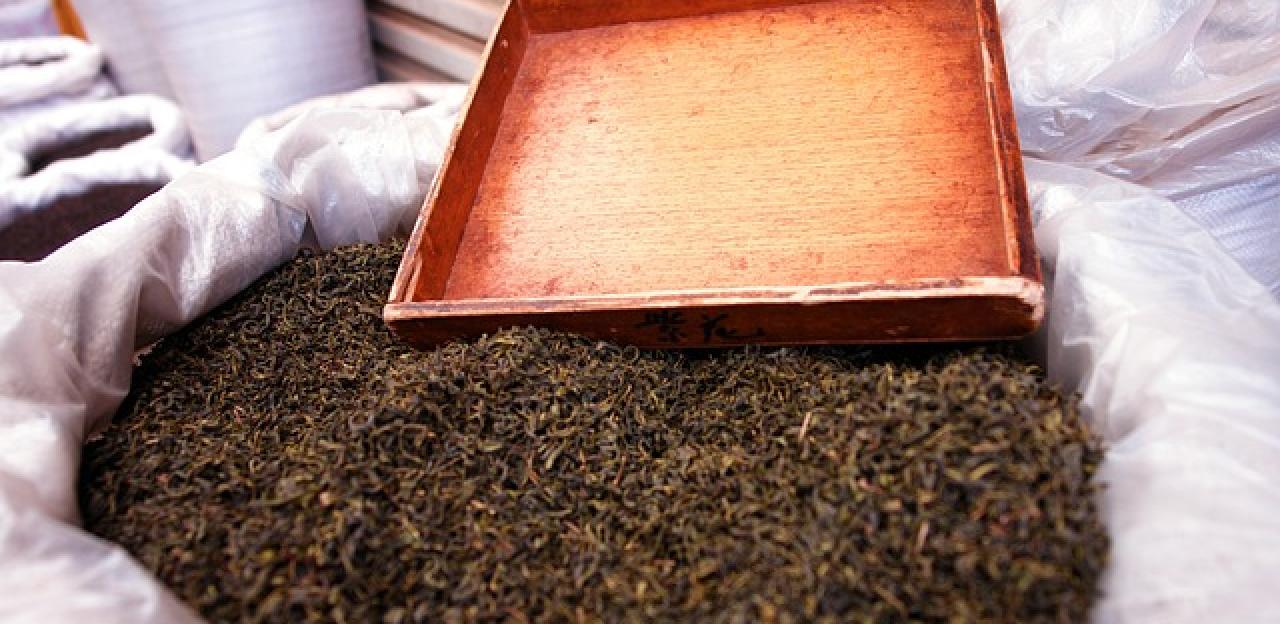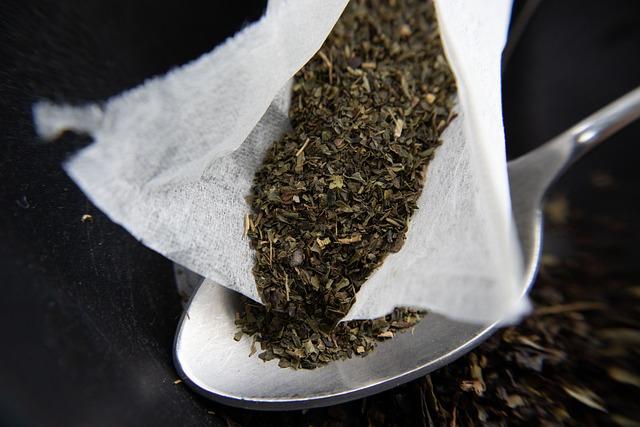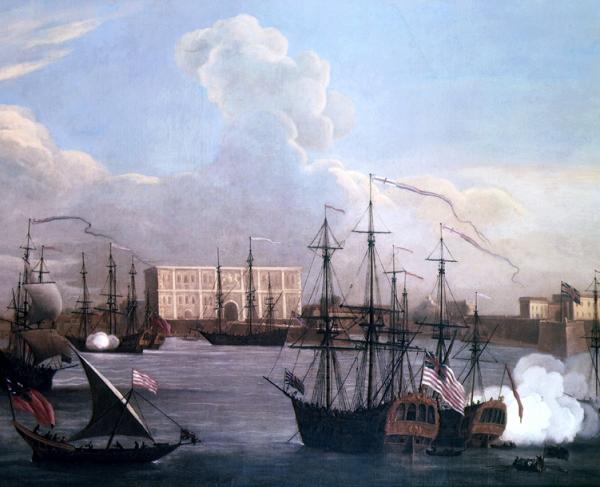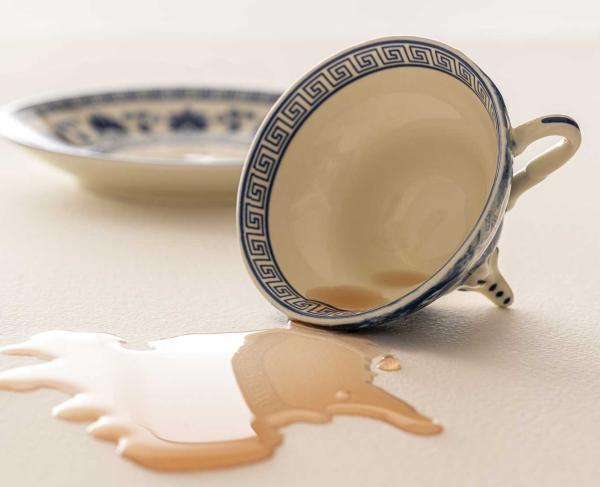Tea: Brewing a Revolution

Tea: how could pounds of dried leaves have caused so much trouble in the colonies in 1773? The history of the beverage involves more hot water than just what is needed to make a strong cup of tea.
The exact date of the “discovery” of tea is murky in history and surrounded by legends from the highlands of China. One of the earliest dates of tea’s brewing is around 2000 B.C.E., and in later centuries, the emperors of China and their courts enjoyed tea as a delicate, energizing beverage. Popularity grew in regions of Asia, and, in time, tea piqued the interest of Europeans.
In 1559, a Venetian book mentioned tea and points to European interests and trading hopes with the far east. More than 50 year later—in 1606—the Dutch imported tea to Europe for the first recorded time. Was it a medicine, beverage, a luxury, a necessity, or just a fad? wondered the Europeans who found the dried tea leaves for sale and took tentative sips of the steaming liquid brewed with the exotic plant. By 1650, influential and wealthy people of France had declared tea to be fashionable, leading the way for the tea craze that engulfed Europe. Britain followed the popular trend, and by the 1660s, coffee houses in London and other British cities boasted tea on their menus. Catherine of Portugal who married King Charles II in 1662 is credited with boosting the popularity of tea in Britain, and her dowry included tea, a testament to the value of the leaves and its still-novelty in the island nation. The court and the fashionable followed Queen Catherine’s example, and then tea made its way to other British social classes. At the end of the century, in 1699, Britain imported 13,082 pounds of tea, and that amount only increased during the 18th Century.
The British East India Company led the tea trade for that island nation. This powerful monopoly had been trading in southeast Asia and dominating the spice trade since 1600 and the end of Queen Elizabeth I’s reign. During the 17th Century, British monarchs increased the power of the Company, allowing them to use military force, claim land, and create settlements to further their capitalistic ventures and bring more goods and wealth back to Britain. The East India Company monopolized the tea trade into Britain, charging high prices for the commodity and increasing imports exponentially decade by decade. For example, in 1.2 million pounds of tea were legally imported in 1721, followed by 4.7 million pounds in 1750. British tea drinkers in the 1770s used between 4-5 million pounds of leaves annually.

The legal trade of tea was measurable and taxable. In the early days of tea importation, it took time for authorities to decide how to tax the commodity. At first, tea was taxed by the cup, in liquid form. However, in 1689, the tax switched to the dry tea leaves. Efforts to avoid the tea taxes in Britain took a variety of measures, from simply reusing tea leaves, selling “fake tea” (which sometimes contained poisonous plants) to illegal smuggling. By the 1740s, tea smuggling into Britain was common, even though the smugglers could face the death penalty for their actions. An unofficial war between smugglers and authorities occurred, and some smugglers killed or tortured customs officers, tax men, or the constables in an effort to keep their illegal actions secret. In the mid-1780s, Prime Minister William Pitt the Younger cut the taxes on tea and essentially ended the profitability of tea smuggling in Britain.
Tea reached the colonies in North America with the Dutch who brought the leaves and beverage to their colony, New Amsterdam. Eventually, Holland’s colony became a British colony and was renamed New York. The interest in tea spread through along the eastern seaboard of North America and increased as the British consolidated their hold on the 13 colonies. The British East India Company with its tea monopoly could not sell directly to the colonies, instead selling to merchants who then sold in the colonies. Tea smuggling happened in the colonies, too. In 1760, estimates calculated that 1 million pounds of tea entered the colonies, but three-quarters of that amount was smuggled. Legal tea sales increased in the colonies after 1767 when Britain removed some of the restrictions.
In 1772, the British East India Company had a stockpile of 21 million pounds of tea. This four year supply was not selling in Britain because of the rampant smuggling, and the Company owed 1 million monetary pounds in taxes. The Tea Act of 1773 allowed the British East India Company to export directly to the colonies and the colonies would pay a three-penny tax. Some people in the British North American Colonies were already irritated with a series of taxes that had been implemented and repealed during the 1760s. To these disgruntled colonists, the Tea Act seemed like a boiling point.

The most famous colonial reaction to the imported tea occurred in Boston, Massachusetts on December 16, 1773. Known as the Boston Tea Party, a group of politically motivated colonials—organized by the Sons of Liberty—boarded three ships carrying British East India Company tea and dumped the leaves into the harbor, rather than paying the taxes. The tea that landed in Boston Harbor was mostly loose black tea and loose green tea, originally imported from China and then left to sit in warehouses until the East India Company shipped it to the colonies. At other locations along the eastern seaboard, destructive “tea parties” occurred. Coffee gained popularity in the colonies, too.
The complex history of tea is tied to expanding European empires and colonial experience and revolt. In the British colonies in North America, the tea leaves became a symbol of taxation, and rebellious colonies found creative measures to dispose of the tea from organized boycotts to actual destruction.
Further Reading:


